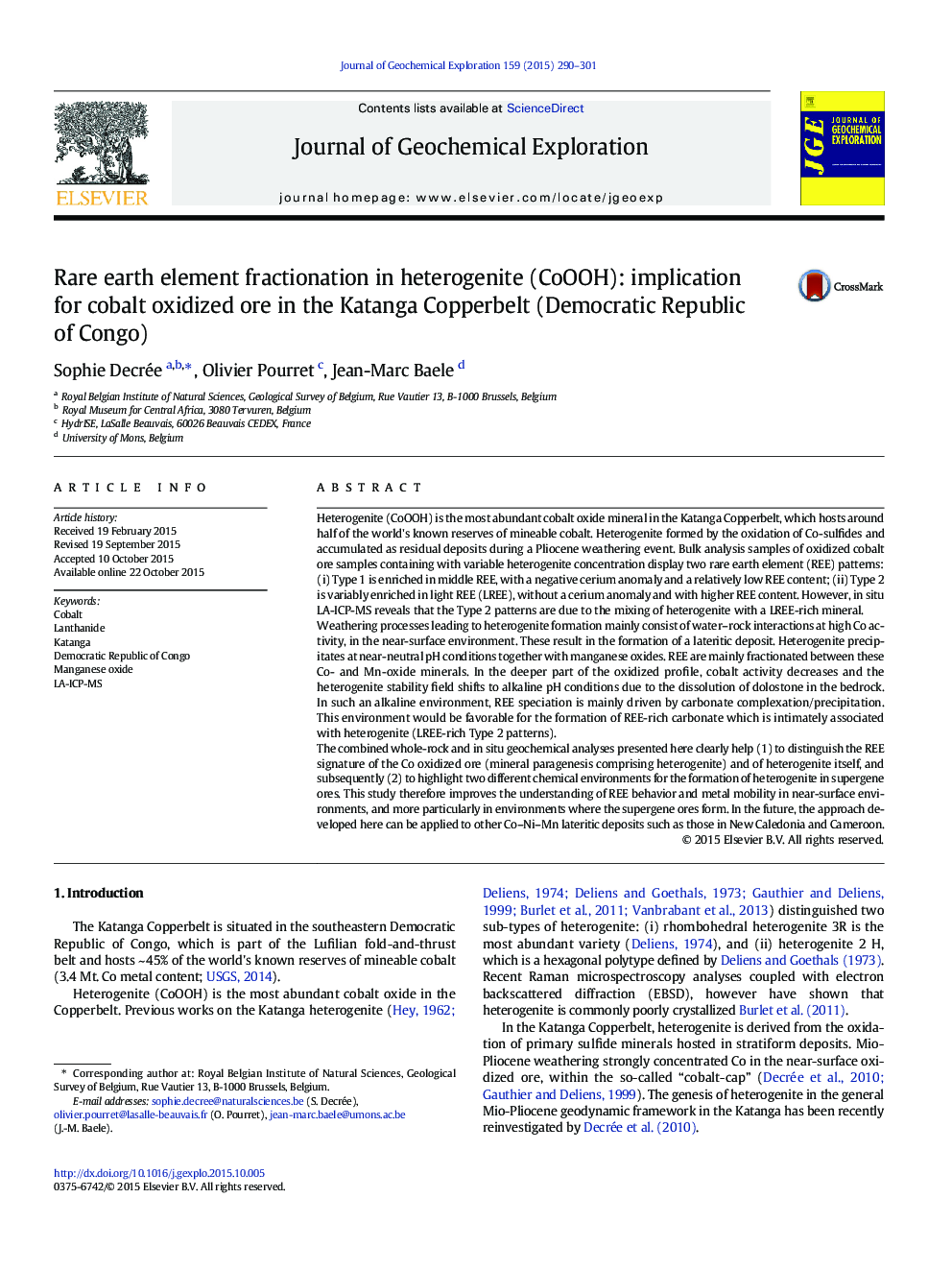| کد مقاله | کد نشریه | سال انتشار | مقاله انگلیسی | نسخه تمام متن |
|---|---|---|---|---|
| 4457069 | 1620900 | 2015 | 12 صفحه PDF | دانلود رایگان |

• Heterogenite is the most abundant oxidized cobalt mineral in the Katanga Copperbelt, Democratic Republic of Congo
• Processes leading to heterogenite formation are investigated using rare earth element distributions
• A 1st REE pattern type emphasizes the competition between heterogenite and Mn-oxides in near-surface pH-neutral environment
• A second type of REE patterns reveals heterogenite deposition at depth, under alkaline conditions
• REE show two distinct chemical environments for the formation of heterogenite in supergene ores
Heterogenite (CoOOH) is the most abundant cobalt oxide mineral in the Katanga Copperbelt, which hosts around half of the world's known reserves of mineable cobalt. Heterogenite formed by the oxidation of Co-sulfides and accumulated as residual deposits during a Pliocene weathering event. Bulk analysis samples of oxidized cobalt ore samples containing with variable heterogenite concentration display two rare earth element (REE) patterns: (i) Type 1 is enriched in middle REE, with a negative cerium anomaly and a relatively low REE content; (ii) Type 2 is variably enriched in light REE (LREE), without a cerium anomaly and with higher REE content. However, in situ LA-ICP-MS reveals that the Type 2 patterns are due to the mixing of heterogenite with a LREE-rich mineral.Weathering processes leading to heterogenite formation mainly consist of water–rock interactions at high Co activity, in the near-surface environment. These result in the formation of a lateritic deposit. Heterogenite precipitates at near-neutral pH conditions together with manganese oxides. REE are mainly fractionated between these Co- and Mn-oxide minerals. In the deeper part of the oxidized profile, cobalt activity decreases and the heterogenite stability field shifts to alkaline pH conditions due to the dissolution of dolostone in the bedrock. In such an alkaline environment, REE speciation is mainly driven by carbonate complexation/precipitation. This environment would be favorable for the formation of REE-rich carbonate which is intimately associated with heterogenite (LREE-rich Type 2 patterns).The combined whole-rock and in situ geochemical analyses presented here clearly help (1) to distinguish the REE signature of the Co oxidized ore (mineral paragenesis comprising heterogenite) and of heterogenite itself, and subsequently (2) to highlight two different chemical environments for the formation of heterogenite in supergene ores. This study therefore improves the understanding of REE behavior and metal mobility in near-surface environments, and more particularly in environments where the supergene ores form. In the future, the approach developed here can be applied to other Co–Ni–Mn lateritic deposits such as those in New Caledonia and Cameroon.
Journal: Journal of Geochemical Exploration - Volume 159, December 2015, Pages 290–301